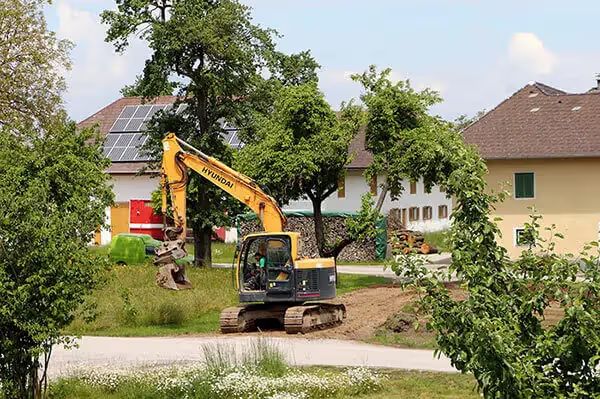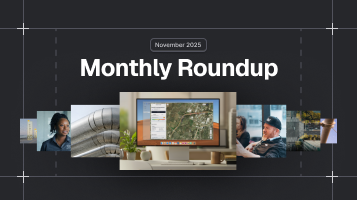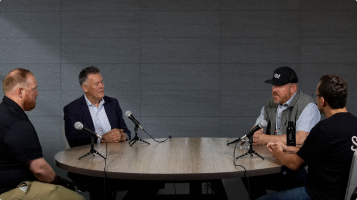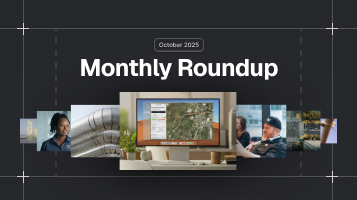Digging up the imperfect system for excavation safety
Written by

Published on
April 22, 2021


Table of contents
Living with a private yard or garden has its many advantages and obvious pluses. Who doesn't enjoy spending an afternoon outside playing a game or relaxing in the evening over an outdoor dinner? Home owners everywhere are tending their backyards with enthusiasm, gardening in the vegetation or doing maintenance of water features and other common fixtures.
Unfortunately for some of them it might turn from a bright hobby into bad news.
When someone wants to dig outside, installing a new fence for example, they are not always aware of buried underground utilities hiding under their green.
Sadly, even if you remember where your water main goes it is just one of a number of lines, pipes and cables that utility companies and providers have buried in your area, meaning you are more often than not simply unaware of their existence at all.
This makes picking up a shovel a potentially dangerous activity, risking accidental utility strikes leading to damage or injuries in worst case scenarios.
The issue is being addressed by local authorities and governments in different ways, with some focusing on the commercial stakeholders to provide solutions and some enact a more regulatory approach relying on governmental agencies to keep the general public safe.
In the U.S. there is a national organization overseeing these efforts and working to ensure people can dig safely on their property.
The national '811' call center is a service for individuals to call ahead of any planned digging or excavation work and based on their location wait for utility companies to send in their field crews to locate and mark their underground assets, if any.
Providing coverage nationwide each state has its own 'call-811' center that coordinates with utility companies and relevant providers like gas and communications, concentrating requests from civilians and relaying them to the proper responder.
This is a vital service as according to the Common Ground Alliance an underground utility line is damaged every nine minutes somewhere in the U.S., adding up to over 200,000 underground utility hits nationwide every single year.
Proving an accessible resource for the general public the '811' centers stayed active during the COVID-19 shutdown and continued to respond to calls.
The various centers regularly release information about their activity and the figures describe a growing demand and correlating increase in workload.
In Texas the 'Texas811' center reported processing upwards of 1.1 million dig and excavation tickets in the first quarter of 2021, a significant increase from the 900K tickets reported for the same period in 2020. The center has received over 82K calls during March this year, some 25% more than March of 2020 and almost double the total amount of calls received that month in 2019.
Similar numbers are also shown in Florida where the aptly named 'sunshine811' center has reported 1.7 million incoming tickets during 2020.
When looking at damage reports there is still room for improvement as 27% of incidents (e.g. utility strikes and accidental damages) occurred in sites that did not have a locating ticket, meaning no prior call was made to the 'sunshine811' center.
Another sector heavily reliant on this solution is development and construction, as evident in Colorado where the 'Colorado811' center has reported over 230K incoming tickets since the beginning of 2021 of which 95% are for professional excavations, most commonly by local contractors.
This points to the fact that a whole industry is also dependent on this resource, and accordingly limited by its reach and availability.
This is an imperfect system with a process that is built on a fragmented knowledge base, designed so each utility provider and company are responsible for maintaining an accurate database and record of their infrastructure, and as such very vulnerable to gaps due to negligence, organizational forgetting and human errors.
Coupled with the physical limitations of a manned response made up of field operators dispatched by each company separately, it seems this model has reached its limit in terms of operational scalability.
We suggest another approach, one that is based on precision technology and information sharing available to all stakeholders.
The 4Map platform developed by 4M Analytics is made exactly for this kind of challenge, bypassing the human factor by using satellite imaging and computer vision to produce high-accuracy detailed maps of any existing underground structure within a given area and generating a digital database of subsurface mapping on any scale, from a single square mile to entire countries.
Another major advantage of the 4M map platform is its ability to deliver results in a very short time-frame, cutting through countless man hours spent on logistics, coordinating multiple parties, field surveys and cross-referencing separate databases.
We know that our innovative solutions are changing the way the professional market is viewing subsurface mapping, and we believe it can deliver quality results on both the municipal and national level.
Recent blog posts

Our Newsletter
Join 7k infrastructure professionals
Get monthly insights on ways to build smarter, faster and safer with Utility AI.



.avif)

